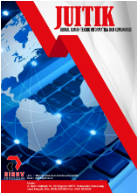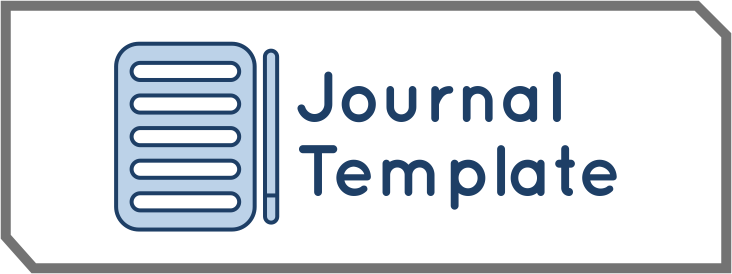Prediksi Prestasi Belajar Mahasiswa menggunakan Algoritma Naïve Bayes
DOI:
https://doi.org/10.55606/juitik.v3i1.1822Keywords:
Student Performance Prediction, Naïve Bayes, Classification, Data Mining, Machine LearningAbstract
This study aims to predict students’ academic performance using the Naïve Bayes algorithm. The problem arises because academic assessment processes in many universities are still carried out manually, which can lead to subjectivity and inefficiency. Several factors—such as assignment scores, quizzes, examinations, attendance, motivation, and learning activities—significantly influence student performance, yet they have not been optimally utilized in prediction processes. The methods used in this research include data collection, preprocessing, splitting the dataset into training and testing sets, and applying the Naïve Bayes algorithm to classify student performance into categories of good, fair, and poor. The results indicate that the Naïve Bayes algorithm is capable of producing sufficiently accurate predictions and can be used as a decision-support tool to help improve the quality of learning in higher education institutions
References
Agrawal, A., & Gupta, N. (2020). A comparative study of classification algorithms in education dataset. International Journal of Computer Applications, 176(25), 1–6.
Han, J., Kamber, M., & Pei, J. (2012). Data mining: Concepts and techniques (3rd ed.). Morgan Kaufmann.
Hastie, T., Tibshirani, R., & Friedman, J. (2009). The elements of statistical learning: Data mining, inference, and prediction (2nd ed.). Springer.
Kotsiantis, S. B. (2007). Supervised machine learning: A review of classification techniques. Informatica, 31(3), 249–268.
Mursyidah, L., & Muslim, M. A. (2018). Penerapan algoritma Naïve Bayes dalam memprediksi prestasi belajar siswa. Jurnal Teknologi Informasi dan Pendidikan, 11(1), 45–53.
Patel, H., & Prajapati, P. (2018). Study and analysis of classification algorithms for performance improvement. International Journal of Computer Sciences and Engineering, 6(4), 74–80.
Putra, I. G. D., & Nurhayati, D. (2021). Implementasi Naïve Bayes untuk prediksi hasil belajar mahasiswa. Jurnal Teknologi dan Sistem Informasi, 7(2), 112–120.
Tan, P.-N., Steinbach, M., & Kumar, V. (2018). Introduction to data mining (2nd ed.). Pearson.
Witten, I. H., Frank, E., & Hall, M. A. (2011). Data mining: Practical machine learning tools and techniques (3rd ed.). Morgan Kaufmann.
Yulianti, F., & Prasetyo, A. (2020). Analisis performa algoritma Naïve Bayes dalam klasifikasi data akademik mahasiswa. Jurnal Sains dan Informatika, 6(2), 126–133.
Han, J., Kamber, M., & Pei, J. (2012). Data Mining: Concepts and Techniques (3rd ed.). Morgan Kaufmann.
Rish, I. (2001). An empirical study of the naive Bayes classifier. IBM Research Papers.
Zhang, H. (2004). The optimality of naive Bayes. Proceedings of the Seventeenth International Florida Artificial Intelligence Research Society Conference.
Hasibuan, M. A. (2020). Prediksi prestasi belajar mahasiswa menggunakan algoritma Naïve Bayes. Jurnal Teknologi Informasi dan Ilmu Komputer, 7(2), 155–162.
Wati, R., & Nugroho, H. (2019). Analisis prediksi mahasiswa berisiko drop out menggunakan Naïve Bayes. Jurnal Informatika, 13(1), 11–20.
Mitchell, T. M. (1997). Machine Learning. McGraw-Hill.
Murphy, K. P. (2012). Machine Learning: A Probabilistic Perspective. MIT Press
Downloads
Published
How to Cite
Issue
Section
License
Copyright (c) 2023 Jurnal Ilmiah Teknik Informatika dan Komunikasi

This work is licensed under a Creative Commons Attribution-ShareAlike 4.0 International License.













